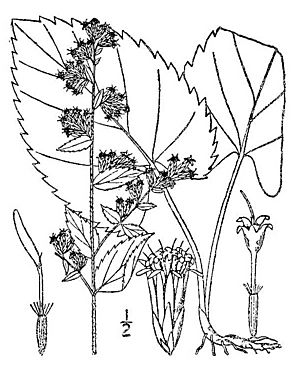False goldenrod facts for kids
Quick facts for kids False goldenrod |
|
|---|---|
 |
|
| 1913 illustration | |
| Scientific classification | |
| Genus: |
Solidago
|
| Species: |
sphacelata
|
| Synonyms | |
|
|
Solidago sphacelata, also called false goldenrod or autumn goldenrod, is a beautiful plant from North America. It belongs to the sunflower family, just like sunflowers! You can find it growing naturally in the eastern parts of the United States. This includes states like Virginia, the Carolinas, and even as far west as Illinois and Mississippi.
About False Goldenrod
False goldenrod is a special plant that can handle dry weather very well. It's known as a drought-tolerant plant, meaning it doesn't need a lot of water to survive. It's also a perennial herb, which means it lives for more than two years. It comes back year after year, unlike plants that die after one season.
What Does It Look Like?
This plant can grow quite tall, reaching up to 120 centimeters (about 4 feet). It has special parts underground called a caudex and rhizomes. These are like hidden stems and roots that help the plant store energy and spread.
When it blooms, a single false goldenrod plant can produce a huge number of flowers. Imagine up to 250 small, bright yellow flowers! These flowers grow in a big, branched cluster at the top of the plant. Their vibrant yellow color is like a beacon for pollinators.
How It Attracts Butterflies
The bright yellow color of the false goldenrod flowers is very important. It helps to attract butterflies, which are key pollinators for this plant. When butterflies visit the flowers, they help carry pollen from one plant to another. This process helps the false goldenrod make seeds and grow new plants. It's a great example of how plants and animals work together in nature!

